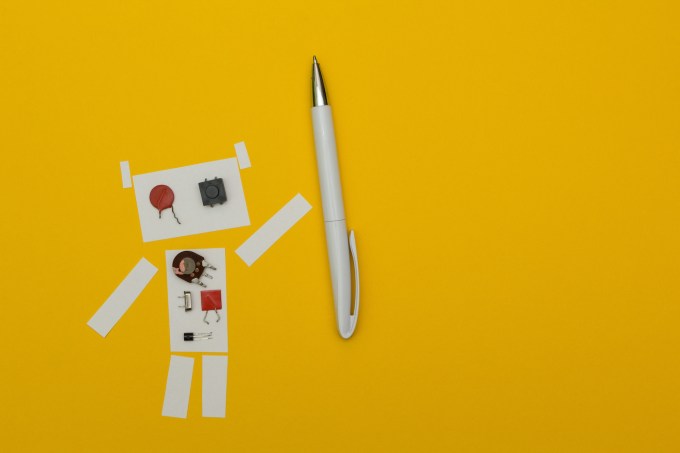With all the devices one can attach to a smartphone to extend its capabilities, it was only a matter of time before a breathalyzer attachment came along.
Alcohoot Breathalyzer
6/10
Wired
Test your BAC using a smartphone. The company claims accuracy down to +/-0.010 percent.
Tired
The results can be inconsistent. Blowing into the device to get a reading takes some practice. Users are going to feel a false sense of security when it comes to getting behind the wheel.
The Alcohoot is a $120 breathalyzer that plugs into your smartphone. Via a companion app, it tracks how many drinks you’ve consumed and displays an approximation of your blood alcohol concentration (BAC), the metric used to measure whether or not you’re legally intoxicated.
It’s a neat idea — various companies have tried to bring a device like this to market before, but the Alcohoot is the first to be labelled “law enforcement-grade.” In reality, it doesn’t quite live up to its promise. The results aren’t as accurate as the real thing the cops carry around, and the device isn’t really a safe indicator of whether or not you’re OK to drive home at the end of a night. Sure, a portable breathalyzer that connects to your smartphone and gives you near instantaneous results is fun. And as Alochoot portrays it, it’s a decent ice-breaker at parties. But it’s still a novelty, not a serious safety tool.
The unit itself is small: 2.69 x 1.88 x 0.86 inches, and just under 2 ounces in weight. The Alcohoot comes with eight mouthpieces to help keep the device clean, a loop to attach it to your keyring, and a USB cable for charging.
The internal battery that powers Alcohoot lasts long enough to perform 500 tests. In order to ensure a consistent experience with those test results, though, you’ll need to have it calibrated roughly every 1,000 tests. The app will alert you when it’s time to do this. You don’t recalibrate it yourself, you send it away — Alcohoot has an exchange program set up for users to return devices in need of calibration, and receive a calibrated device in return.
The device works in tandem with an Android or iOS smartphone by connecting through the 3.5mm port. It’s not compatible with every Android device, but the general rule of thumb is a device running Android 4.0 and higher will work just fine. iOS users only need to be running iOS 6 for Alcohoot to work. You can always check the device compatibility list if you have any questions.
A test is conducted by connecting Alcohoot to your smartphone with the companion app running. The device will blink white and blue a few times, then the app will let you know when it’s ready for a test. Tap on “Begin” in the app and wait for the countdown to signal that the device is ready.
The suggested and advertised test procedure requires you to blow into the Alcohoot’s mouthpiece for four seconds. In my testing, I found it requires far longer than four seconds of constant blowing into the device. I would estimate six to eight seconds is a more realistic number. Figuring out the proper way to register a test is one of the most frustrating parts of the product. When I initially set it up and tried to test myself after drinking a beer, I spent the next 20 minutes trying to get just a single reading from the device. First, the device tells you to blow for four seconds. Then it displays an error dialogue saying you need to blow harder. Eventually I figured out blowing harder isn’t what is really needed. Instead, blowing at a consistent pace through the device for an extended amount of time is what works. Again, the six to eight-second range proved to be the sweet spot.
My wife tried getting the device to register a test and eventually gave up. No matter what she did, Alcohoot would not read her BAC. I can only imagine someone who is intoxicated sitting in a bar wildly (and repeatedly) trying to blow into a device attached to a phone. My advice is to test out the device and discover the best technique to register your own BAC percentage before you head out to happy hour.
When the device does get a successful reading, it clicks in your hand and causes your smartphone to vibrate. After a few seconds the app will display your BAC percentage.
In my tests, the results were all over the place. The first test would usually read high, say 0.085 percent, after a few beers in a short amount of time. The next test, less than a minute later, would drop down to 0.076 percent. Subsequent tests would fall closer to the second result, giving me a range of what my current BAC percentage was, but there was a lingering feeling of doubt due to the initial test being so high.
As you can see, that’s a big discrepancy, and one that even law enforcement doesn’t regularly experience. According to an officer at my local police precinct, the standard acceptable variance level for breathalyzer units within the department is +/- 0.002 percent. It is worth nothing, Alcohoot’s own technical specs for the product list the expected variance levels to be +/-0.010 percent, which is likely why I experienced such a drastic fluctuation in results at times.
When putting the Alcohoot’s test results (after the initial test) up against the results of a local Sheriff deputy’s standard-issue breathalyzer unit, the Alochoot was consistently within +/- 0.002 percent, however. For all intents and purposes, I’d say the accuracy of the device was verified during my time with the unit and a police-issued unit.
Still, the variance in my own tests often made the difference between being able to legally drive home and a DUI. I don’t know about you, but I’m not willing to risk a DUI based those fluctuating results.
Which brings us to the other potential pitfall: How long until you write off the results as false and drive home anyways? Especially if you’re under the influence at the time of the test. Blowing a level that’s under the legal limit can very well provide you with false reassurance of your ability to drive home, but what you may not realize is that it’s likely your BAC is continuing to rise long after your last drink.
The required 15-minute break between your last drink and using Alcohoot is aimed at providing accurate test results without an abundance of alcohol residue left in your mouth. It doesn’t give your body enough time to absorb and metabolize all alcohol in your system, which in turn can lead to a higher BAC.
After my time with the Alcohoot, I can say it does give you a general idea of how much you’ve had to drink, but it’s nothing you should base any potentially life-altering decisions on. Is it good to help you monitor and keep track of how your body reacts to alcohol? You bet. Is it a tool built to help you decide if you should be behind the wheel? Absolutely not.
If you’ve had more than just a couple, you should be calling a cab — which is exactly why the Alcohoot team incorporated Uber support directly into the app.
All photos by Josh Valcarcel/WIRED














